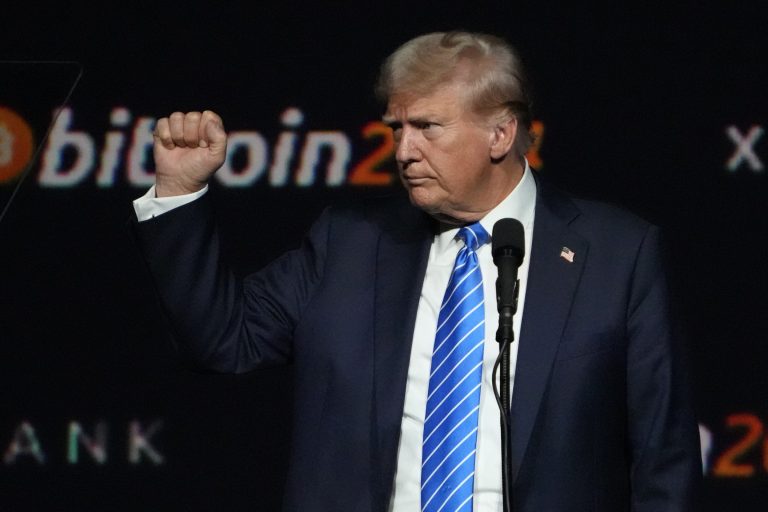India And US To Discuss Bilateral Trade Agreement: What's At Stake?

Table of Contents
Potential Benefits of an India-US Bilateral Trade Agreement
An ambitious India-US trade agreement holds the promise of substantial mutual gains. Successful negotiation could unlock significant economic growth and strengthen strategic ties.
Increased Trade Volume and Economic Growth
A bilateral agreement could significantly boost bilateral trade, leading to increased economic growth for both nations. The resulting economic expansion would be driven by several factors:
- Reduced Tariffs and Streamlined Customs: Lowering tariffs and simplifying customs procedures would facilitate smoother and more efficient trade flows, reducing costs for businesses and consumers. This streamlined process is crucial for boosting the volume of goods and services exchanged between the two countries.
- Increased Exports: India could see increased exports of its services sector, particularly in IT and pharmaceuticals, while the US could benefit from increased exports of agricultural products. This balanced exchange would contribute to overall economic growth.
- Job Creation and Investment: The increased trade volume would likely create new jobs and stimulate investment in both countries, further fueling economic expansion. This positive impact on employment would be a significant boon to both economies.
Enhanced Strategic Partnership
Beyond the economic benefits, a successful India-US trade agreement would significantly enhance the strategic partnership between the two nations. This strengthened relationship would manifest in several ways:
- Strengthened Collaboration: A strong economic foundation would support collaboration on crucial areas like technology, defense, and infrastructure development. This cooperation would extend beyond trade, impacting various aspects of bilateral relations.
- Countering Economic Threats: Joint efforts to counter economic threats and promote a rules-based global trading system would become more effective with a strong trade agreement in place. This shared approach would bolster global stability.
- Increased Political Cooperation: The economic partnership would likely translate into increased political cooperation and diplomatic engagement on various global issues. This enhanced diplomatic partnership would benefit both countries' foreign policy objectives.
Challenges and Potential Roadblocks in Negotiations
While the potential benefits are significant, the India-US Bilateral Trade Agreement negotiations face several challenges and potential roadblocks.
Trade Imbalances and Market Access
Addressing the existing trade deficit between the two countries will be a major challenge. Negotiations surrounding market access for specific sectors will be particularly contentious:
- Agricultural Products and Pharmaceuticals: Discussions on market access for agricultural products (including tariffs and sanitary and phytosanitary measures) and pharmaceuticals (including intellectual property rights and pricing) are likely to be complex and lengthy.
- Regulatory Standards and Intellectual Property: Differing regulatory standards and intellectual property rights protection will require careful consideration and compromise from both sides to reach an agreement.
- Data Localization and Digital Trade: Concerns about data localization and the regulations governing digital trade policies need to be carefully addressed to avoid trade barriers in this rapidly growing sector.
Domestic Political Considerations
Both countries face domestic political pressures related to trade agreements. Successfully navigating these pressures will be critical for a successful outcome:
- Job Displacement Concerns: Concerns about potential job displacement in specific sectors due to increased competition will need to be addressed through retraining programs and other mitigation strategies.
- Balancing Domestic Interests: Balancing the benefits of a trade agreement with the interests of domestic industries will be a crucial aspect of the negotiations. Finding this balance will be critical for gaining public support.
- Public Opinion and Lobbying: Public opinion and lobbying efforts from various interest groups could significantly influence the negotiation process and the final agreement.
Key Sectors to Watch
Several key sectors will play a pivotal role in shaping the final India-US Bilateral Trade Agreement:
Information Technology
This is a crucial sector for both nations, with immense potential for growth through reduced barriers to trade in software, services, and data. A streamlined approach to digital trade will be essential.
Pharmaceuticals
Discussions on intellectual property rights, pricing mechanisms, and data exclusivity will be crucial in this sector. Finding a balance between protecting innovation and ensuring affordable access to medicines will be a key challenge.
Agriculture
Addressing tariffs, sanitary and phytosanitary measures, and other non-tariff barriers will be critical for boosting agricultural trade between the two countries. This includes resolving issues related to food safety and quality standards.
Energy
Cooperation on clean energy technologies and renewable energy sources could be a significant aspect of the agreement, promoting sustainable development and reducing reliance on fossil fuels.
Conclusion
The potential India-US Bilateral Trade Agreement presents both significant opportunities and considerable challenges. While increased trade and strengthened strategic ties are highly desirable outcomes, overcoming obstacles related to trade imbalances, market access, and domestic political considerations will be crucial for success. The key sectors mentioned above will undoubtedly shape the final agreement, and close monitoring of the negotiations will be essential. The success of this India-US Bilateral Trade Agreement hinges on the ability of both nations to find common ground and forge a mutually beneficial partnership. Stay informed on the developments of this crucial India-US Bilateral Trade Agreement and its potential impact on the global economy. Understanding the intricacies of this India-US Bilateral Trade Agreement is key for businesses and policymakers alike.

Featured Posts
-
 Cocaine Found At White House Secret Service Ends Inquiry
May 09, 2025
Cocaine Found At White House Secret Service Ends Inquiry
May 09, 2025 -
 Bitcoin Price Prediction Can Trumps Policies Push Btc To 100 000
May 09, 2025
Bitcoin Price Prediction Can Trumps Policies Push Btc To 100 000
May 09, 2025 -
 Analyzing The Potential For Bitcoin To Reach 100 000 Under Trumps Presidency
May 09, 2025
Analyzing The Potential For Bitcoin To Reach 100 000 Under Trumps Presidency
May 09, 2025 -
 Formacioni I Psg Se 11 Lojtaret Celes Per Sukses
May 09, 2025
Formacioni I Psg Se 11 Lojtaret Celes Per Sukses
May 09, 2025 -
 Kak Snegopad Povliyal Na Rabotu Aeroporta Permi
May 09, 2025
Kak Snegopad Povliyal Na Rabotu Aeroporta Permi
May 09, 2025
Latest Posts
-
 Elon Musks Net Worth Soars Tesla Stock Surge After Doge Departure
May 09, 2025
Elon Musks Net Worth Soars Tesla Stock Surge After Doge Departure
May 09, 2025 -
 How Us Economic Policies Affect Elon Musks Wealth And Teslas Future
May 09, 2025
How Us Economic Policies Affect Elon Musks Wealth And Teslas Future
May 09, 2025 -
 Fluctuations In Elon Musks Net Worth A Look At Us Economic Factors
May 09, 2025
Fluctuations In Elon Musks Net Worth A Look At Us Economic Factors
May 09, 2025 -
 The Correlation Between Us Power And Elon Musks Net Worth
May 09, 2025
The Correlation Between Us Power And Elon Musks Net Worth
May 09, 2025 -
 Analyzing Elon Musks Net Worth The Impact Of Us Economic Conditions
May 09, 2025
Analyzing Elon Musks Net Worth The Impact Of Us Economic Conditions
May 09, 2025
